
Port Authority of the Balearic Islands (APB) to begin the remodelling of Palma’s seafront promenade at the end of this summer
27/07/2022La Autoridad Portuaria de Baleares (APB) ha anunciado hoy que prevé iniciar las obras de remodelación del paseo Marítimo de Palma dentro del mes de octubre, pero no antes del domingo 9, fecha en la que se celebra el Zafiro Palma Marathon Mallorca, para no interferir en su organización. El presupuesto de ejecución rondará los 38 millones de euros, sin IVA, y las obras tendrán una duración prevista de 20 meses. El director de la APB, Jorge Nasarre, ha remarcado así mismo que el inicio de las obras está condicionado también a la firma del contrato con la empresa adjudicataria. En este momento la APB dispone de una candidata de las 11 licitadoras presentadas al concurso, pero la tramitación está a la espera de la resolución de dos ofertas económicas incursas en baja temeraria. The Port Authority of the Balearic Islands (APB) announced today that it plans to begin work on the remodelling of Palma’s promenade in October, but not before Sunday the 9th, the date on which the Zafiro Palma Marathon Mallorca will be held, to avoid any possible disruption to the organisation of the event. The total budget for the project will be around 38 million euros, excluding VAT, with the works scheduled to last 20 months. The director of the APB, Jorge Nasarre, has also remarked that the start of the works is also conditional on the signing of the contract with the company awarded the contract. The APB currently has 1 candidate out of the 11 bidders in the tender, but the process is still awaiting a decision on two financial bids that are considered unreasonably low. Earlier this morning, the APB released details of the project drawn up by the Martínez Lapeña-Torres Arquitectes architectural studio, together with a team from Grupo TYPSA, as well as a two-minute virtual reality video showing what the final result of the project will look like. According to the mayor of Palma, José Hila, who also took part in the presentation held at the institutional headquarters of the APB in the port of Palma, “the remodelling is very ambitious: we will transform the seafront of Palma, breaking down the existing barrier and bringing Palma closer to the sea”. “This is a prime example of the ongoing transformation of Palma, a more sustainable and green city where the citizens, who are going to reclaim the sea, are the main protagonists. It will also revitalise commercial activity in the area and generate employment, both of which are also key issues. This is an opportunity for our city that will start to become a reality this year”, Mr Hila added. In the opinion of Jorge Nasarre, “this new stage of Palma’s promenade is in line with the port’s tradition of improving the city’s connectivity, this time with people rather than road traffic in mind”. A promenade for pedestrians Ibizan architect Elías Torres, who was in charge of publicly unveiling the project, gave a detailed explanation of the remodelling project, which he described as “a promenade for pedestrians”. Pedestrian space will increase from 29.5% to 39.7%, whilst the pavements in the area furthest from the sea, which are now between 2.5 and 5 metres wide, will be increased from 5 to 10 metres. In this way, the compatibility of uses – such as terraces, green areas, parking, bus stops, containers, etc. – will be guaranteed, without disturbing pedestrians. On the seaward side of the promenade, spaces will be designated for pedestrians to take strolls and sit down. Another improvement is an increase in cross connectivity with a doubling of pedestrian crossings (from 13 to 26), from one crossing every 250-370 metres to every 100 metres. Mobility study The reduction of vehicle space is supported by a mobility study which shows that such a reduction is feasible. Moreover, for more than two years now, a reduction of one lane in each direction of traffic has been a reality, with no serious traffic flow issues being observed for the time being. The resulting proposal is for a promenade with two lanes in each direction, 64,300 square metres of road surface and 35% vehicle space, as opposed to the current 3-4 lanes in each direction, 107,000 square metres of road surface and 58.5% vehicle space. The management of public transport is also undergoing some change: bus lines and stops are being maintained, with improved space and waiting conditions and new bus shelters. The cycle lane will double its share of the promenade (from 2% to 5%), with 5 new parking spots and a length of 3.5 km. A green promenade The proposal presented by Torres increases the number of trees threefold and doubles the number of palm trees and flowerbeds (from 9.7% to 20%). This will include 1,820 new trees, 512 palm trees, 69 transplanted specimens and 20 new species. On top of all this, accessible facilities, children’s play areas, containers and other services and infrastructures will be introduced. Monuments, sculptures and sundials along the promenade have also been marked, preserved or relocated. One of the most outstanding works is the restructuring of the road junction in the area of Paraires, which will make room for the urban and landscape integration of the new Club de Mar, on which work is still underway. Meanwhile, in the area of Sa Riera, pedestrian circulation will be prioritised at the junction with Avenida Argentina, with much wider pavements and a new system of accessible ramps. Thus, in addition to addressing one of the main problems of the promenade, it will also improve access to the neighbouring Plaça de Sant Elm. Access will also be improved to Plaça de Santo Domingo de la Calzada. The pedestrian area will be unified in this space thanks to the elimination of the service lane and the installation of a children’s play area. The connection with the neighbourhood of Es Jonquet will also be improved.
In 2021, the APB invested 820 thousand euros in rebates on port dues concessions relating to environmental protection
27/07/2022"Towards a sustainable horizon" was the slogan of the presentation of the Sustainability Report 2021, which took place today at the institutional headquarters of the Port Authority of the Balearic Islands (APB). This document marks as a priority of the public authority the development of the future of the ports, guaranteeing the common good, by offering both the public and private sectors what is considered an essential space for the islands. At the same time, the Strategic Plan indicates the path to follow to achieve this objective: to guarantee the maritime supply and connectivity of the Balearic Islands in the most efficient and safe conditions, and to facilitate the socio-economic activities that contribute to their development in terms of economic and environmental sustainability and integration with the surrounding areas. As stated in the report, the key factor of its strategic planning is sustainability, combining the efforts of society as a whole to achieve a friendlier planet that focuses more on the challenges of the future. In this regard, one of the areas in which work is being carried out is related to anti-corruption. The APB is committed to guaranteeing efficient, transparent and quality management, which, together with the publication of the Code of Ethics, aims to build trust in all actions taken by the organisation. The director of the APB, Jorge Nasarre, was responsible for opening the event and welcoming those present. He highlighted how pre-pandemic figures had exceeded 49 million euros in 2021. However, “while it is clearly important to maintain a robust financial situation that allows us to undertake maintenance and improvement projects, we would not be on the right track if our economic sustainability were not also accompanied by significant progress in the environmental, social and governance sectors”. The head of the APB’s Quality, Environment, Sustainability and CSR department, Jorge Martín, presented the contents of the report, stressing that innovation and sustainability are two essential concepts of the Strategic Plan: “Changing, evolving, adapting to new demands, making improvements, redesigning processes and innovating in all areas of our port activity in order to achieve that sustainable business model that will make us better day by day”, he pointed out. Towards a more sustainable activity Extensive mapping has identified up to 87 stakeholders, who have been asked for their opinion on the APB and its management in terms of sustainability and CSR. The conclusions drawn from this dialogue confirm the importance of the environmental sector in the context of sustainability, the importance of circularity in APB’s projects and the emergence of equality and the promotion of youth employment as key material aspects. Thus, the APB is in a process of adaptation in which sustainable management should contemplate an increase in the volume of container, solid and liquid bulk, general cargo and passenger traffic, as well as a reduction in the consumption of energy and natural resources, the volume of waste produced and the negative impacts on social systems and ecosystems in the areas of influence of the ports. The Report also provides relevant data: 2,771 public domain titles and services 11.4 million tonnes moved (11.3% more than in 2020) 2.4 million passengers (61.5% more than in 2020) 237 training sessions carried out 11 good practice agreements in force, with an annual investment of 152,204 euros and 820,333 euros in bonuses for environmental protection by the concessionaires. Among the key operational objectives in terms of the environment are the minimisation of the negative environmental effects of maritime transport, development of energy generation and efficiency alternatives as well as the positioning of the APB ports as a reference in environmental management. People as a basic pillar The general public and users of the ports occupy a special place in the CSR plan, which constitutes one of the main strategic objectives. “Our commitment is not only to offer better services every day but to do so in an intelligent and environmentally friendly way, promoting actions with a social impact that have repercussions on the environmental quality of the surroundings in which our activity takes place”, concluded Martín.
Shipping accounts for 15% of air pollution in Palma
18/07/2022In recent years, the stakeholders of the Port Authority of the Balearic Islands (APB) have become increasingly concerned about air quality and its possible impact on the activity in the ports it manages, hence today’s conference entitled “Air quality, a priority for our ports”. During the meeting, experienced speakers addressed the problem and the solution from different perspectives, placing special emphasis on the importance of having sufficient economic and human resources to ensure that the processes of monitoring and controlling air quality are rigorous and accurate, in order to obtain objective, reliable and real data for accountability and strategic decision-making. Thus, the president of the APB, Francesc Antich, highlighted the major issues concerning the public authority in environmental matters, such as “the fight against climate change and pollution and the defence of biodiversity and natural resources”. Regarding air quality, he said that this is a matter of debate in view of the activity of our ports, as well as other activities such as road traffic. The APB highlighted the fact that the flagship project in this context deals with the implementation of the cold ironing system in the ports of Palma, Eivissa, Maó and Alcúdia. This will enable ferries to connect to the on-shore power grid while they are moored at the port in order to reduce the emission of gases and noise generated by them during waiting, disembarkation and embarkation operations. This technique is an alternative way for ships to keep machinery idle and therefore eliminate the impact produced by their noise and pollution. Manuel Vellón, head of the APB’s air quality monitoring system, confirmed that the main pollutants studied are sulphur dioxide, nitrogen oxides and particulate matter. The air quality sensors in the port of Palma have been providing validated data since September 2019, and results have shown pollution to be below the levels established by current legislation. Furthermore, the Director General of Energy and Climate Change, Pep Malagrava, presented the collaboration agreement between different institutions on air quality in Palma, in which the APB and AENA and others will participate, “key and essential infrastructures in an island community, following strategies to boost resilience and reduce emissions”. The Sustainability Observatory was also presented by Fernando Prieto, and the APB’s environmental strategy, by the head of the Quality, Environment, Innovation and CSR Department, Jorge Martín. Finally, the different projects related to this subject that the public authority is carrying out were presented: air quality monitoring, the Eiffel project, Greenhyland and incorporation into the Ecological Transition Cluster. Transparency and active listening Through this type of meeting, which is open to the public and the media, the APB is committed to the transparency and active listening of its stakeholders, who are clearly concerned about the quality of the air they breathe. It is also focused on the joint search for solutions through institutional alliances that speed up the achievement of significant improvements, making port cities healthier and more resilient to the effects of climate change.
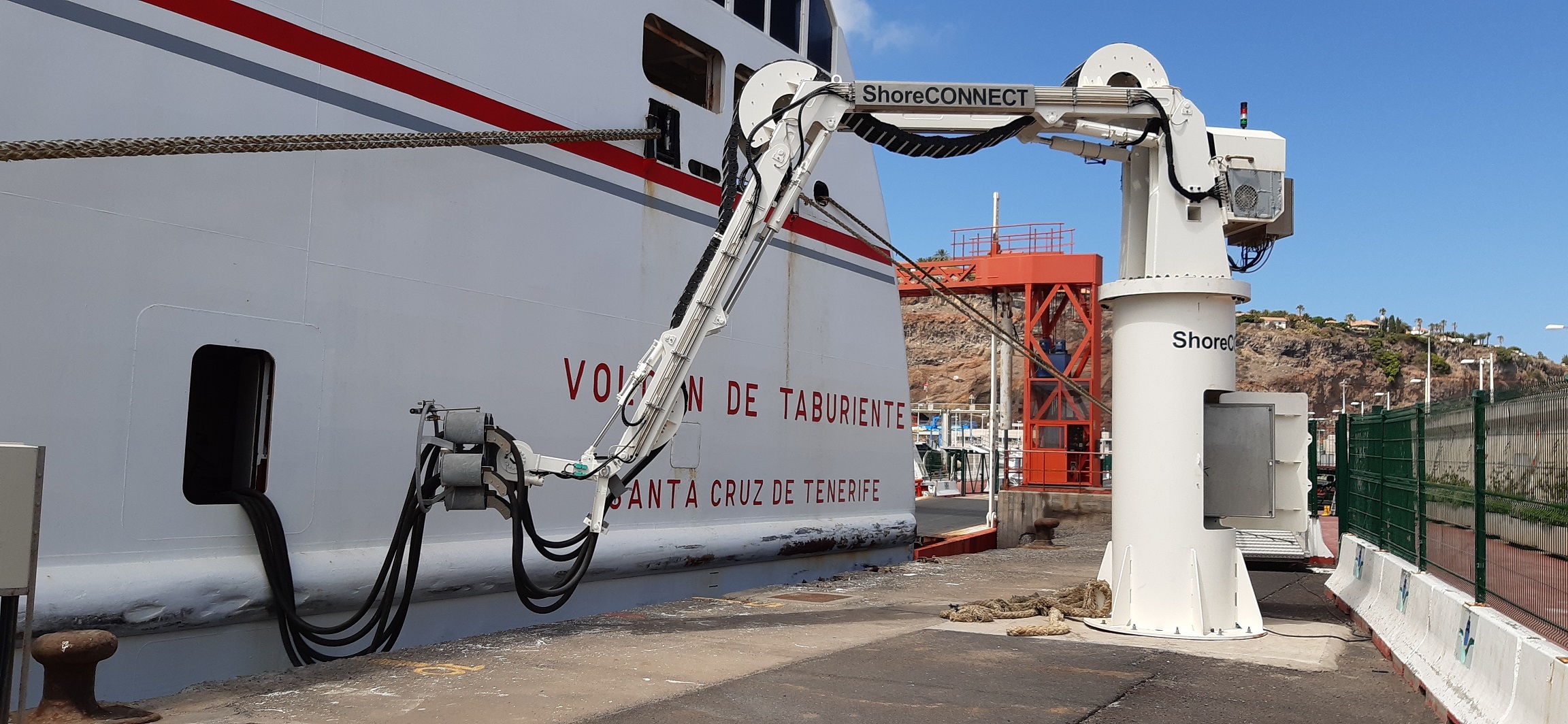
The APB will invest 12.3 million euros in the implementation of cold ironing systems in the ports of Palma, Alcúdia, Eivissa and Maó
14/07/2022The ferries that dock at the Paraires quay or the Commercial quays at the port of Palma will be connected to the on-shore power grid while they are moored at the port in order to reduce the emission of gases and noise generated by them during waiting, disembarkation and embarkation operations. This technique, known as cold ironing, is an alternative way for ships to keep machinery idle and therefore eliminate the impact produced by their noise and pollution. Following a trial period, in collaboration with Baleària’s Eleanor Roosevelt, the facility will be prepared to connect to the power grid a ferry with a maximum power demand of 1,600kW (medium voltage) and another fast ferry with 800 kW (low voltage), although not simultaneously. For the on-shore electrical connection, the system has 275 metres of medium voltage underground lines, a transformation centre and a frequency elevating substation in the service area of the port of Palma. The pilot experience in Palma will later be implemented in the port of Alcúdia (Ponent quays), Ibiza (Botafoc quays) and Maó (Cós Nou). The commissioning of these facilities is planned for the second half of 2024 and will involve an investment of 12.3 million euros. Support for institutions In this context, the APB plans to apply jointly with the Port Authority of Barcelona to the call for European CEF-Transport 2022 grants from the Programme to Support Sustainable and Digital Transport in Competitive Concurrence with the OPS4B&B project. Specifically, the plan falls under action line 5, measure 11: Maritime Transport Sustainability. This aid scheme subsidises up to 40% of the total amount of the work. In this respect, the support of the local institutions has been unanimous: Town councils, island councils and the Government have signed a letter of endorsement that will accompany the initiative, with the conviction that climate neutrality and the desire to make the ports of general interest in the Balearic Islands as environmentally friendly as possible is a common objective. Reducing emissions When in port, ships use their auxiliary engines to produce electricity during loading, unloading and mooring operations. Although the amount of emissions produced during the mooring phase is less than during the maritime traffic phase itself, in this case the pollutants emitted directly affect the air quality of the population centres near the port, as well as the port itself. The use of electrical energy from the national grid means a reduction in the emissions produced by the ship, as the emission factor per MWh of the grid’s generators is much lower than that of the ship's auxiliary engines.
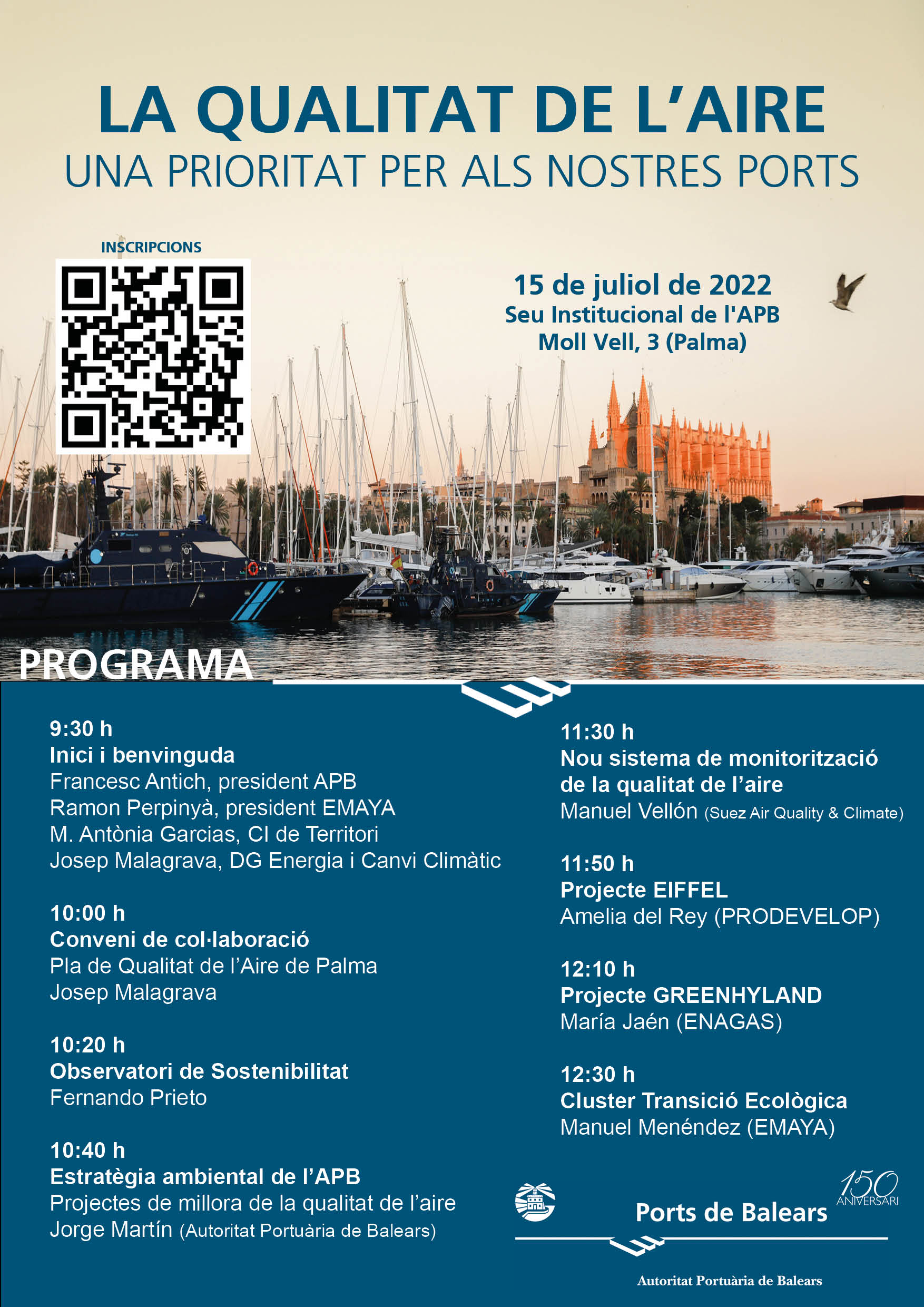
The APB presents its stakeholders with the results from air quality monitoring in ports of general interest
12/07/2022In recent years, the stakeholders of the Port Authority of the Balearic Islands (APB) have become increasingly concerned about air quality and its possible impact on the activity in the ports it manages, hence the conference scheduled for 15 July at the APB’s institutional headquarters (Moll Vell, 3) from 9:30 am to 1:30 pm, entitled “Air quality, a priority for our ports”. During the meeting, experienced speakers will address the problem and the solution from different perspectives, placing special emphasis on the importance of having sufficient economic and human resources to ensure that the processes of monitoring and controlling air quality are rigorous and accurate, in order to obtain objective, reliable and real data for accountability and strategic decision-making. The Director General for Energy and Climate Change, Pep Malagrava, will therefore present the collaboration agreement between different institutions on air quality in Palma. The Sustainability Observatory will also be presented by Fernando Prieto, and the APB’s environmental strategy, by the head of the Quality, Environment, Innovation and CSR Department, Jorge Martín. Finally, the different projects related to this subject that the public authority is carrying out will be presented: air quality monitoring, the Eiffel project, Greenhyland and incorporation into the Ecological Transition Cluster. Transparency and active listening Through this type of meeting, which is open to the public and the media, the APB is committed to the transparency and active listening of its stakeholders, who are clearly concerned about the quality of the air they breathe. It is also focused on the joint search for solutions through institutional alliances that speed up the achievement of significant improvements, making port cities healthier and more resilient to the effects of climate change.

The port of Palma is replenished with mussels for the biofiltration of its waters
06/07/2022In 2022, the Port Authority of the Balearic Islands (APB) launched the project The mussel as a bioremediator in the port of Palma waters. This is a study led by the Oceanographic Centre of the Balearic Islands, which has confirmed its viability and survival after passing the first tests. With the logistical support of the company Astilleros de Mallorca, the Oceanographic scientists started work in the port of Palma, installing several “ropes” with mussels provided by shellfish gatherers from Menorca. Specifically, two ropes, each with about 30 mussels, were installed in the Astilleros de Mallorca dock facilities, another in those of the nautical concession La Lonja Marina Charter and a fourth outside the port, which serves to control and differentiate parameters with those inside the port. Every three months, the Oceanographic Centre’s research team, led by Ms. Salud Deudero, will analyse the tissues of the mussels in this first phase, determining the amount of hydrocarbons, heavy metals and microplastics they accumulate. Finally, in this first phase of the study, if the mussels in the port of Palma were clearly found to be beneficial and viable for the final biofiltration of port water, a scientific proposal would be published to implement bioremediation with mussels in the port of Palma, in order to scale it up to other ports managed by the APB in the medium term. Filtering all the water in the port The first calculations made by the scientists assure that some 4,000 metres of mussel rope, which would be installed and hidden under some marshes, at no inconvenience to sailors or users, could filter all the water in the port of Palma every three months, as a single mussel filters up to two litres of water per hour. These preliminary calculations will finally be validated in the second phase of the study. In fact, different studies, such as that of the Plymouth Marine Laboratory in the United Kingdom, confirm the capacity of mussels to eliminate small floating plastics, proving that a group of just 300 mussels could filter up to 250,000 pieces of microplastics every hour. The results show that mussels could rapidly reduce up to 25% of the microplastics floating in the sea. To date, there is no cheaper, more ecological and sustainable formula for filtering and purifying port water than the one implemented in the port of Palma. Furthermore, according to the experts, the mussels will not have to be sacrificed, as they will be able to live their entire life cycle without suffering from living in a port, where until a few years ago they were common. The polluting substances would finally be recovered and disposed of in accordance with current regulations. These molluscs could therefore restore the ecological balance of port waters, even if it takes years or decades, in a natural and environmentally-balanced manner. On the other hand, the mussels will under no circumstances be intended for consumption, but only to filter, oxygenate and help improve port waters, and perhaps in the future also waters with deficient oxygenation and renewal or with an excess of fertilisers of agricultural origin in areas close to outfalls. Pioneering experience in New York The port of New York was the first in the world to implement a large-scale bioremediation system using mussels. The conclusions reached by researchers from the American Oceanic and Atmospheric Administration are clear: the mussels succeeded in filtering bacteria, microalgae, sediments, hydrocarbons, heavy metals and even microplastics, considerably improving the biological and physico-chemical conditions of the port waters of the American city.
Club Marítimo Mahón will manage a nautical-sports marina on the Levante quay of the port of Maó
01/07/2022The Board of Directors of the Port Authority of the Balearic Islands (APB) agreed yesterday at a meeting held in Palma to select the proposal submitted by the Club Marítimo Mahón for the management of a nautical-sports facility for small and medium-sized boats in the Levante dock of the port of Maó, between the area known as sa Punta des Rellotge and es Gatassus. This authorisation is aimed primarily at the promotion and teaching of water sports and consists of 165 moorings for boats from eight to fifteen metres long. The space, with an area of 19,167squaremetres of water and 698squaremetres of land, has four floating and occasionally piloted pontoons. It also includes an esplanade and a quay beside it, intended for the mooring of light boats for training, sports, and non-profit-making educational, social and cultural activities. As this offer was considered the most advantageous solution by the Board of Directors, a temporary authorisation will be granted for two years, with the possibility of its renewal every year up to a maximum period of three years. The initial occupancy fee was 160,862 euros per year, to which the Club Marítimio Mahón has added an improvement corresponding to 44,438 euros, in addition to the 4% activity fee.
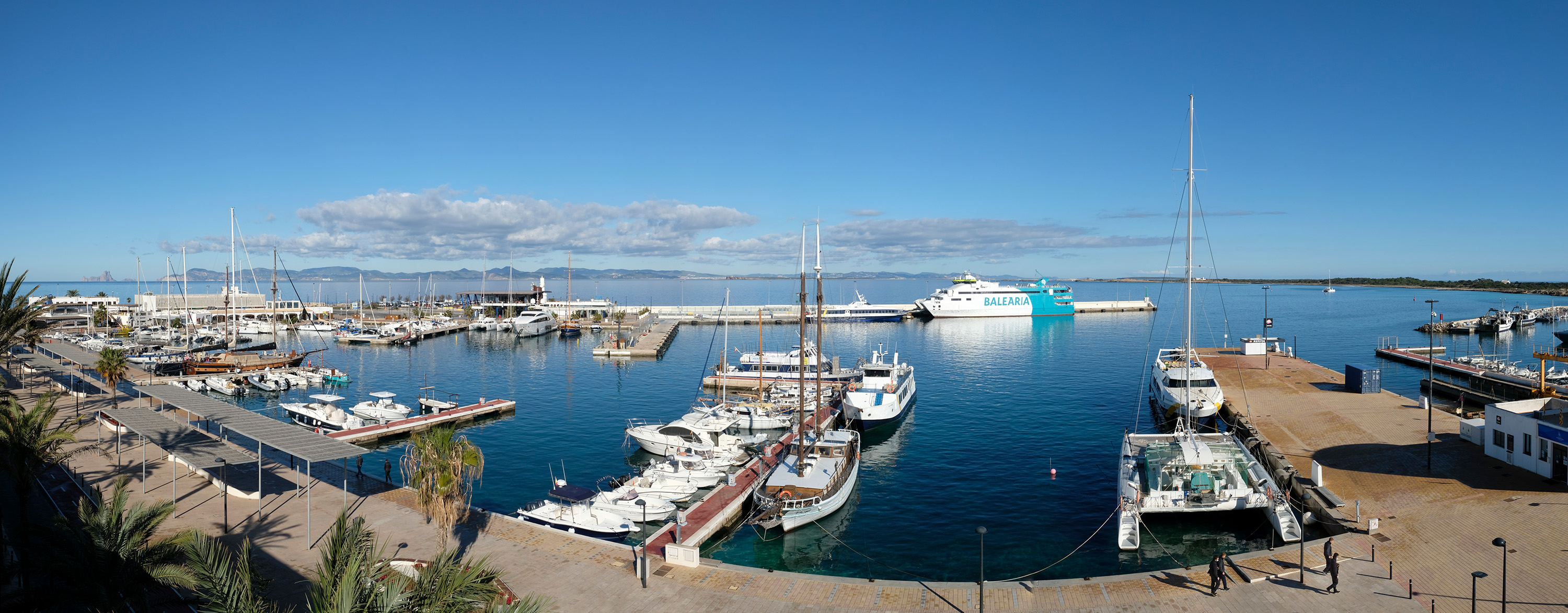
The APB will occupy the Levante sub-basin of the port of La Savina and will use it for the operation of excursion boats
01/07/2022The Board of Directors of the Port Authority of the Balearic Islands (APB) agreed yesterday in an ordinary meeting to take possession of the Levante sub-dock located in the northern area of the Poniente dock of the port of La Savina, integrating these spaces with the rest of those managed directly by the APB and taking charge of their normal operation and maintenance. Its plans included the transfer of passenger embarkation and disembarkation operations from excursion boats to this area. This resolution will be communicated to Marina Formentera, S.A., and will once again require the immediate delivery of the public domain that it is deliberately occupying since 28 May 2022 without the right to do so, warning of the responsibilities that can be attributed to its refusal to deliver the port’s public property and to its illegal occupancy.
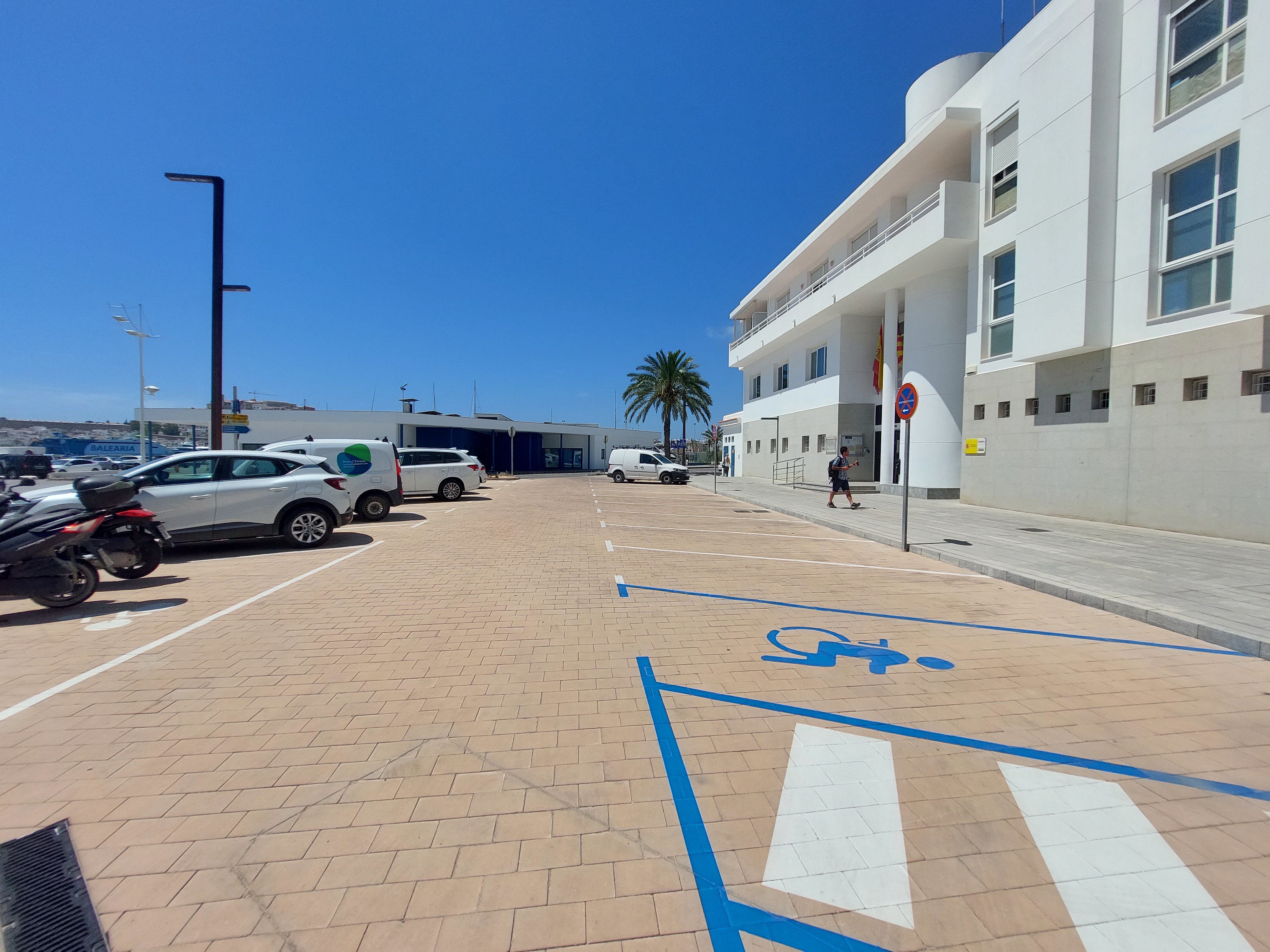
The work on the adaptation of the environment and the façade of the APB offices in Eivissa terminates
10/06/2022The Port Authority of the Balearic Islands (APB) has started work to adapt the environment and the façade of the main office building of the APB in Eivissa, located at the access to the North docks. More specifically, lighting, garden and parking elements have been improved. This project was also intended to increase and renew the pedestrian space around the building. The area is illuminated by LED lighting, while the landscaped area includes an automatic watering system. In terms of accessibility, a ramp has been built attached to the façade and the emergency exits have been adjusted. Finally, linear pergolas made of galvanised steel have been installed. The work was performed by the company TECOPSA for 525,000 euros.
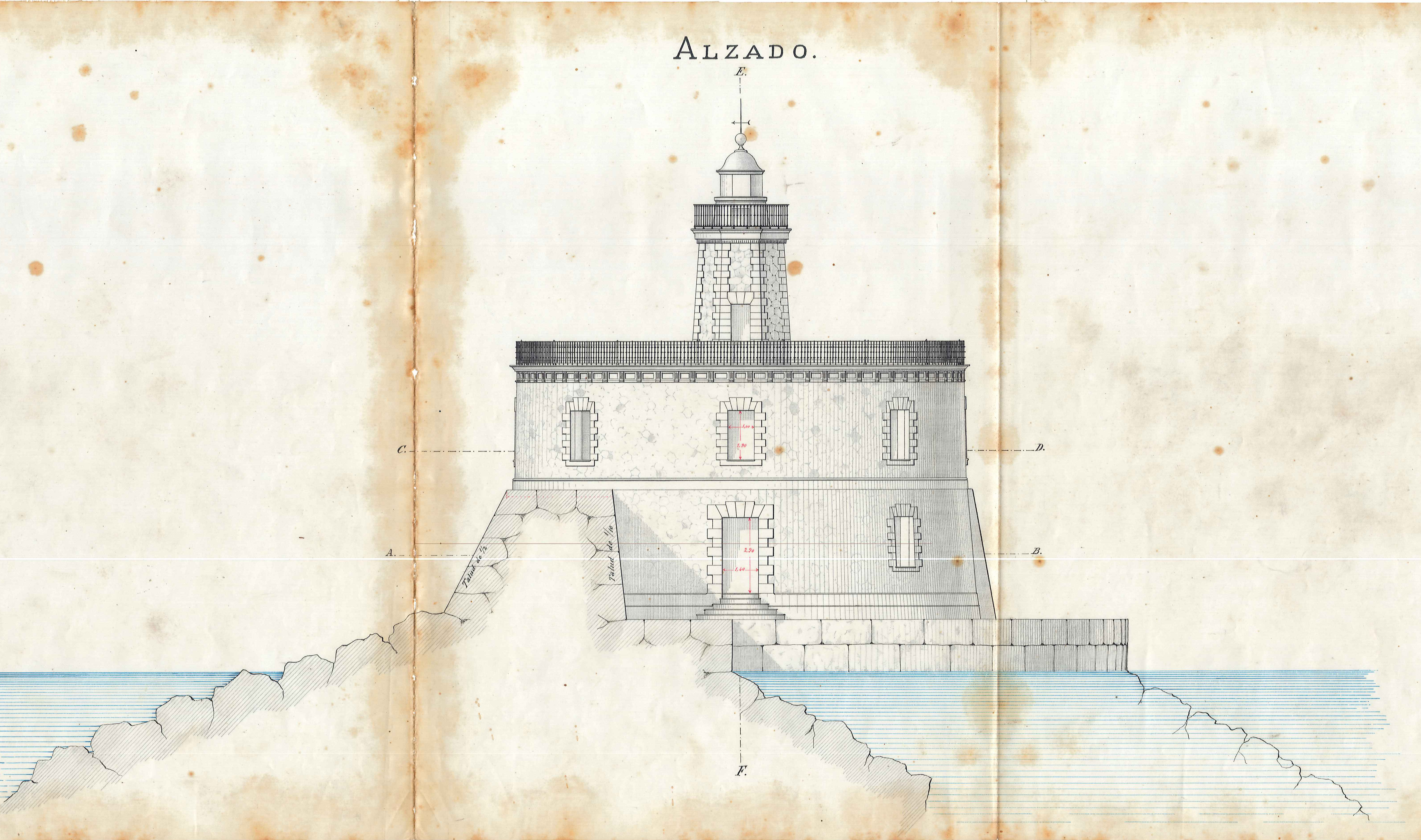
The APB celebrates International Archives Day by bringing to light the original project for the lighthouse in the port of Palma
09/06/2022. The Port Authority of the Balearic Islands (APB) is bringing to light the original project for the construction of the lighthouse in the port of Palma (or lighthouse of La Riba) on the occasion of the International Archives Day. This is the central element of the exhibition that will be open to the public between 8 and 10 June, at the APB’s Institutional Headquarters on the Old Quay. The project, dated 1899 and signed by the engineer Juan Malberti Rigo, who was director of the Board of the Port of Palma de Mallorca between 1874 and 1912, can be seen in the first exhibition organised by the APB Archive, to celebrate the institution’s 150th anniversary this year. Juan Malberti designed the lighthouse at the turn of the century and inaugurated it on 1 November 1903. It remained in service until 1982, when it was definitively extinguished and replaced by other beacons installed along the quay. The building was dismantled stone by stone, numbered and rebuilt on the current site of the main road and backbone of the commercial docks at the port of Palma. During this period, it marked the end of the Paseo de la Riba, an endearing and very popular place among the people of Palma at the time. Today it represents the institutional image of the APB. The exhibition also includes other original projects for port works, period manuscripts, facsimiles and photographs. All these documents have been catalogued by the APB Archive, which begins its mission to bring a small part of its documentary heritage closer to society through this exhibition. International Archives Day Due to its uniqueness, the APB Archive is a true ark of knowledge. Its documentary heritage provides information on engineering, social changes, urban and port development, meteorology, economics, history, etc. All this outlines a map of the social, economic and cultural development of the cities. Ports are the most important pillars of an archipelago, and its city shapers. On the occasion of International Archives Day, 9 June, and coinciding with the 150th anniversary of the constitution of the Port Authority, the APB Archive is opening this exhibition, which will be located at the APB’s Institutional Headquarters on Palma’s Old Quay no. 3, between 8 and 10 June, from 10 am to 3 pm, except on Thursday 9th, when it will be open from 10 am to 7 pm.
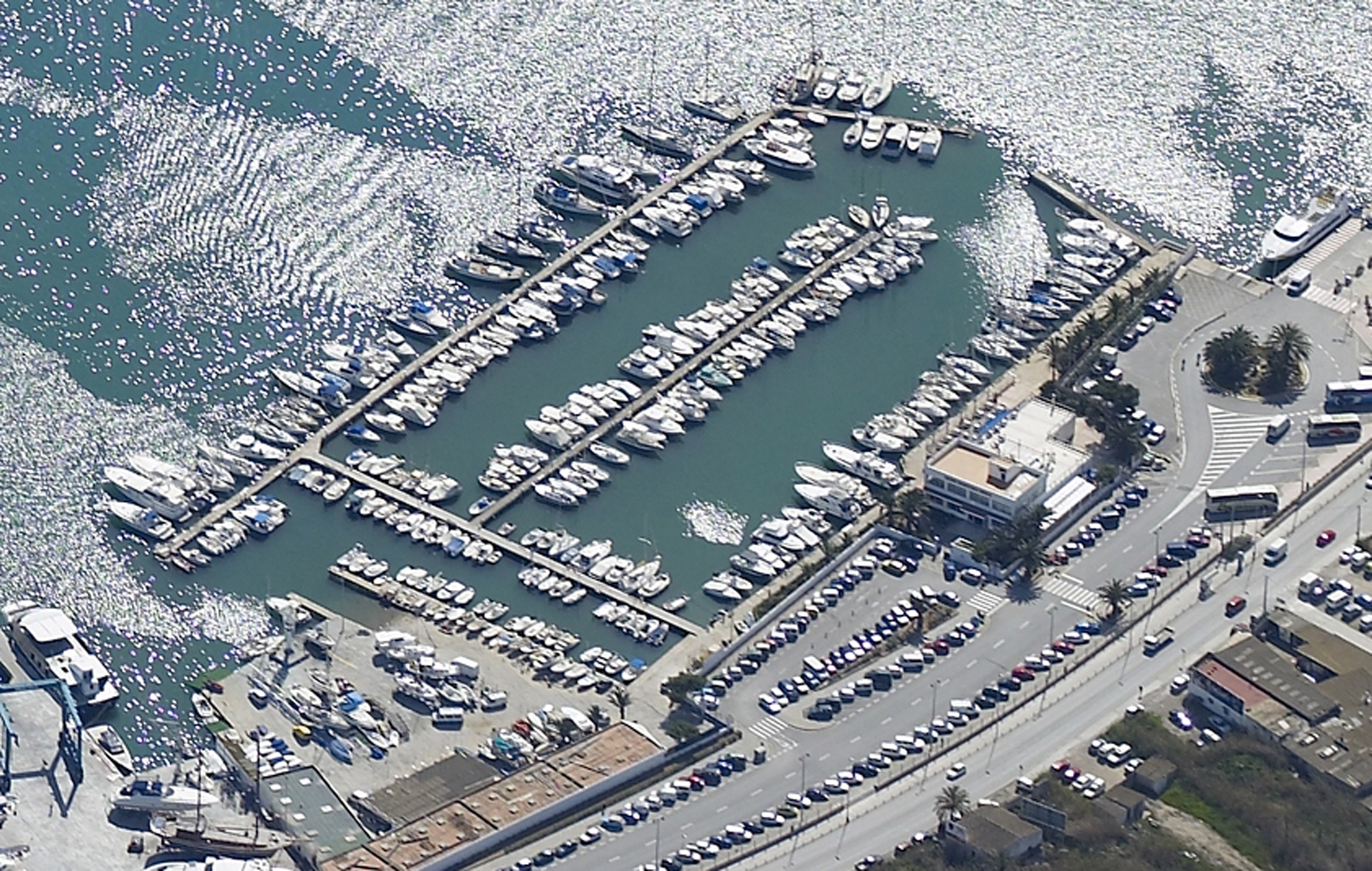
The terms and conditions of the tender for the management of a nautical facility for small and medium-sized boats in the port of Eivissa have been approved
08/06/2022The Board of Directors of the Port Authority of the Balearic Islands (APB) has agreed to publish the terms and conditions of the public tender for the management of a nautical facility for small and medium-sized boats in the port of Eivissa, on the site currently occupied by Club Náutico Ibiza (Nautical Club). The most advantageous solution submitted will be chosen for the granting of a total area of 29,309 square metres (22,596 square metres of water and 6,713 square metres of land), with special attention to the promotion and teaching of the sport that is a benchmark for social responsibility in the nautical sector. The terms and conditions of the tender therefore prioritise the social role and the promotion of sport that the entity awarded the contract will bring to the port community as opposed to the usual nautical facilities that are more geared towards generating economic resources. This operation of this facility will be subject to administrative authorisation and includes the management of 269 moorings for nautical-sports vessels of up to 15 metres in length, bar-cafeteria-restaurant service, mooring of light boats and performance of educational, sporting, social and cultural activities of a non-profit nature, which will be proposed by the bidder. The annual amount of the occupancy rate for improvement by the bidder will be 334,101euros. Resident vessels As this is a facility for small and medium-sized boats, where the maximum length is limited to 15 metres, the mooring places will preferably be used for resident vessels. However, the holder of the authorisation is able to reserve some moorings up to a maximum of 15% for temporary users. The duration of the authorisation will be one year, renewable on an annual basis up to a maximum of three years. This public tender responds to a transitory situation and, therefore, what is intended is mainly to maintain the different services that have been provided within these facilities, as well as the areas that are dedicated to each of them. However, investments in improvements to safety and operating conditions can be proposed - and will be assessed - as well as those linked to the Contingency Plan, all with removable facilities, in the event of possible episodes of unrest occurring in their interior to this end, the APB will make available to the future licensee 3,000 square metres of land and 4,500 square metres of water, as well as 100 mooring places in the low season in the facilities managed by Marina de Botafoc. 180 square metres of floating pontoons will also be provided in the event of activation of the Contingency Plan, all in the interests of prioritising the safety and operational conditions of the facility for boats and users.






